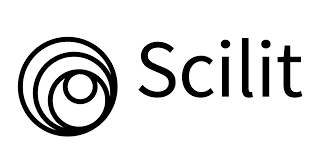Abstract
The decision to extract teeth in orthodontics has long been debated. In Class I malocclusion with upper anterior proclination and severe crowding, extractions are often used to achieve proper occlusion. However, they may compromise aesthetics over time and are less preferred by patients due to pain and the loss of natural teeth. Recent advancements in bracket systems have shifted treatment trends, enabling non-extraction approaches in many cases while maintaining function and aesthetics.
Keywords:Non-extraction; Passive self-ligation; Smile arc protection; Pitts 21; Lateral development
Introduction
The management of significant anterior proclination and crowding has long been debated, with opinions divided between extraction and non-extraction approaches [1-6]. Alternatives to extractions include arch expansion for addressing dental crowding and growth modification or surgery for skeletal discrepancies. While extractions can sometimes deliver optimal results, they are generally avoided when possible. Hunter was among the first to oppose extractions, arguing that they hindered growth [7]. Over time, perspectives on extractions have shifted dramatically, and the debate remains unresolved (Figure 1).
The Great Extraction Debate of 1911
Edward H. Angle advocated for arch expansion and the use of rubber bands to achieve proper occlusion without extractions, emphasizing that retaining all teeth ensured stability and improved esthetics. As the leader of the “new school” of orthodontics, Angle’s philosophy of maintaining a full complement of teeth became widely influential. In contrast, Dr. Calvin S. Case argued that extractions were sometimes essential for achieving stable, long-lasting results. This opposing view led to a prominent and highly publicized debate, culminating in an exchange between Angle’s student, Martin Dewey, and Dr. Case in the dental literature of the 1920s. Dewey championed Angle’s principles, while Case’s stance was supported by Cryer [8-12].
Reintroduction of Extractions in the Mid-20th Century
In the 1940s, Charles H. Tweed revolutionized orthodontic practices in the United States with his impactful presentation of cases treated with premolar extractions. This marked a significant shift away from Angle’s principles, leading to widespread acceptance of extractions. By the 1960s, the Tweed/Begg approach had become the dominant practice, and extraction rates rose sharply [13-18].
Recent Trends Toward Non-Extraction
Modern orthodontics has seen a resurgence in non-extraction treatments, which prioritize preserving natural teeth and enhancing smile aesthetics. The decision to pursue a non-extraction approach depends on factors such as aesthetics, degree of arch length discrepancy, post-treatment stability, functional needs, growth direction and potential, patient compliance, and overall treatment complexity [19-21]. Notably, premolar extractions do not guarantee stable tooth alignment, and contemporary preferences favour fuller lip profiles compared to the standards of the mid-20th century. Arch expansion appliances are widely employed to create space for non-extraction treatments, although their effectiveness is often limited by the patient’s age and growth potential.

Advanced Bracket Systems for Non-Extraction Management
The Pitts 21 passive square slot self-ligating bracket system, combined with broad archwires, has transformed non-extraction treatments, enabling high-quality results in shorter timeframes by promoting lateral arch development. This innovative system features a progressive slot with 2-4° play, compared to 10-14° in other self-ligating brackets. Early engagement of square crosssectional archwires provides precise torque control, allowing for rapid incisor uprighting and improved aesthetics and function [22]. The Smile Arc Protection (SAP) protocol, used in conjunction with Pitts 21 brackets, helps control vertical incisal display, upright the incisors, and enhance the smile arc. Additionally, interproximal enamel reduction, as proposed by Bosio, creates space without compromising alveolar bone, interproximal tissues, or pulp [23- 26]. Specially designed broad archwires further facilitate lateral arch development, creating space to alleviate crowding, reduce overjet, and maintain control over incisal inclination. With a design focused on patient comfort and hygiene, the Pitts 21 system has become a preferred choice for contemporary orthodontic care.
References
- Wahl N (2005) Orthodontics in 3 millennia. Chapter 6: Earlier 20th century appliances and the extraction controversy. Am J Orthod Dentofac Orthop 128(6): 795-800.
- Rinchuse DJ, Busch LS, Dibagno DA, Cozzani M (2014) Extraction treatment Part 1- The Extraction vs. Nonextraction Debate. J Clin Orthod 48(12): 753-760.
- Burrow SJ (2008) To extract or not to extract: a diagnostic decision, not a marketing decision. Am J Orthod Dentofac Orthop 133(3): 341-342.
- Stephens CK, Boley JC, Behrents RG, Alexander RG, Buschang PH (2005) Long-term profile changes in extraction and nonextraction patients. Am J Orthod Dentofac Orthop 128(4): 450-457.
- Erdinc AE, Nanda RS, Işıksal E (2006) Relapse of anterior crowding in patients treated with extraction and nonextraction of premolars. Am J Orthod Dentofac Orthop 129(6): 775-784
- Konstantonis D, Vasileiou D, Papageorgiou SN, Eliades T (2018) Soft tissue changes following extraction vs. nonextraction orthodontic fixed appliance treatment: A systematic review and meta-analysis. Eur J Oral Sci 126(3): 167-179.
- Hunter J (1865) The natural history of the human teeth: explaining their structure, use, formation, growth, and diseases. Vol. 1. R. Hardwicke.
- Pollock HC (1964) The extraction debate of 1911 by Case, Dewey and Cryer. AJO 50: 656-657.
- Pollock HC (1964) The extraction debate of 1911 by Case, Dewey and Cryer: Discussion of Case: The question of extraction in orthodontia. AJO 50: 659-691.
- Pollock HC (1964) The extraction debate of 1911 by Case, Dewey and Cryer: Discussion of Case: The question of extraction in orthodontia. AJO 50: 751-768.
- Pollock HC (1964) The extraction debate of 1911 by Case, Dewey and Cryer: Discussion of Case: The question of extraction in orthodontia. AJO 50: 843-851.
- Pollock HC (1964) The extraction debate of 1911 by Case, Dewey and Cryer: Discussion of Case: The question of extraction in orthodontia. AJO 50 :900-912.
- Dale JG (1988) The Henry Ford of orthodontics. J Charles H Tweed Found 16: 59-76.
- Tweed CH (1932) Reports of cases treated with the edgewise arch mechanism. Angle Orthod 2: 236-243.
- Tweed CH (1944) Indications for the extraction of teeth in orthodontic procedures. Am J Orthod Oral Surg 30: 405-428.
- Tweed CH (1945) A philosophy of orthodontic treatment. AmJ Orthod Oral Surg 31: 74-103.
- Begg PR (1954) Stone Age man's dentition: With reference to anatomically correct occlusion, the etiology of malocclusion, and a technique for its treatment. Am J Orthod 40(5): 373-383.
- Asbell MB (1990) A brief history of orthodontics. AJO 98(3): 206-213.
- Cheng HC, Wang YC (2018) Effect of nonextraction and extraction orthodontic treatments on smile esthetics for different malocclusions. Am J Orthod Dentofac Orthop 153(1): 81-86.
- Evrard A, Tepedino M, Cattaneo PM, Cornelis MA (2019) Which factors influence orthodontists in their decision to extract? A questionnaire survey. J Clin Exp Dent 11(5): e432-438.
- Sved Alexander (1956) The problem of extraction. AJO 42(7): 511-525.
- Burstone CJ (1981) Variable-modulus orthodontics. Am J Orthod 80(1): 1-6.
- Pitts TR (2017) Bracket positioning for smile arc protection. J Clin Orthod 51(3): 142-156.
- Satapathy RK, Verma S, Sowmya J, Chitra P (2024) Torque moments and stress analysis in two passive self-ligating brackets across different incisor inclinations: A 3-dimensional finite element study. J Oral Biol Craniofac Res 14(5): 487-493.
- Bernisha RP, Mishra G, Pradeep Raj G, Chitra P (2024) Incisor torque expression characteristics in two passive self-ligating brackets placed at different heights. A finite element investigation. J Oral Biol Craniofac Res 14(1): 98-106.
- Bosio JA (2022) Safe interproximal enamel reduction. Evidence-based orthodontics equals the author's opinion. Am J Orthod Dentofacial 162(2): 143-145.






























